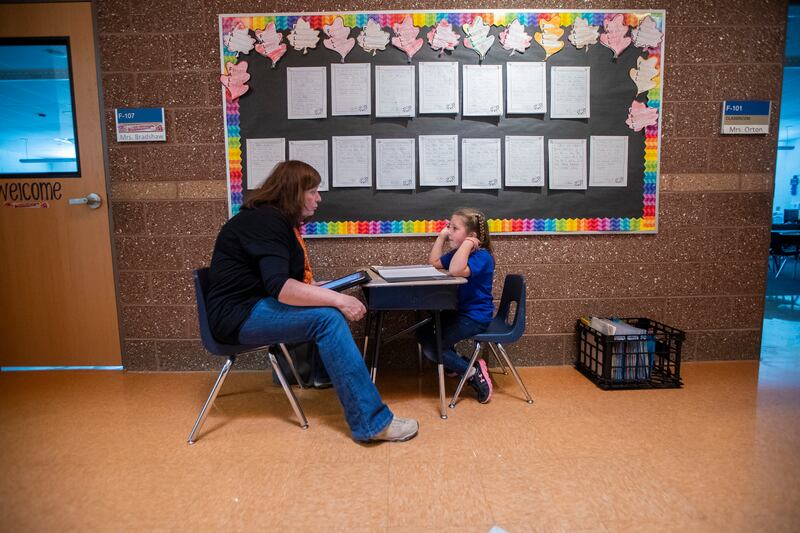I’ve been thinking about Milton Friedman lately.
Next January will mark 18 years since I sat with the renowned economist in a hotel room in downtown Salt Lake City. By then, he was 89 years old (he would live to be 94), but his mind was remarkably clear. Utah was embroiled in hot debates over the future of choice in education, and he had plenty of strong opinions.
“First of all, do not call it ‘public’ education,” he told me. “It is ‘government’ education.” Then he gave me a quick history lesson. “We did not have compulsory education in this country until the late 19th century. We had better literacy in the country then than we have now,” he said.
It’s hard to verify that statement conclusively, but the evidence seems to back him up. Data from the 19th century is either incomplete or subject to biases, but the general feeling among many scholars is that literacy was “virtually universal” and schooling was “widespread” in the mid-19th century, according to a paper published by the National Bureau of Economic Research.
That, of course, was true only among the free population.
However, a list of countries by literacy rate today, published by Worldatlas.com, ranks the United States 125th in the world, at 86%. The top 26 countries on the list, from Andorra to Uzbekistan, have 100% literacy.
Sure, we deal with more immigration than many other countries, and the nation spans a lot of territory, from the backwoods of West Virginia to the ghettos of major cities, but shouldn’t we expect better?
A couple of recent news stories have made me think back to that interview. One concerns the beginning of the new school year. A Deseret News report said more than 80,000 Utah students will begin the year at one of the state’s 135 nontraditional charter schools. Put differently, almost 12% of Utah students are in charters, compared to about 6% nationwide.
When I spoke with Friedman, Utah had just been ranked 49th in terms of education freedom by The Manhattan Institute for Policy Research. A big reason for the low ranking was the lack of charter school options.
That has now changed significantly. Friedman might still remind me that these are government schools. Charters are under the public school umbrella. But they offer room for flexibility and innovation.
Right now the best we can do is examine the progress made toward choice and flexibility over the last two decades and learn all we can about what works.
Those things, like freedom itself, come with risks. Six of the state’s top elementary schools and eight of the top 10 high schools are charters. But the Deseret News story said nine other charters are on notice to improve performance and one, American International School of Utah, has closed due to financial difficulties.
The other news story of importance concerns a unanimous vote of the Legislature’s Legislative Subcommittee — Republicans and Democrats — to do a comprehensive performance audit of Utah’s public education system. The idea is to look at how students are performing, ways to retain teachers, salaries and overhead in all public schools, including charters.
As Senate President Stuart Adams reminded everyone, education funding makes up more than half the state budget. That makes it impossible to divorce education from politics, with pressures from the education establishment to constant provide more funding and tugs from other groups to be more innovative.
But it also suggests lawmakers would be irresponsible if they didn’t take a close look, from time to time, at where the money is going.
I’ve been thinking about other old interviews I did, as well. Back in 2000, I met with four remarkable principals at a conference in Washington — people who were succeeding despite working with students who were overwhelmingly poor or from non-English-speaking homes.
The one thing they had in common was resistance from the education establishment around them. They were treated, as I wrote at the time, like circus sideshows.
I hope this has changed, as well, over the years.
If the Legislature’s audit is to accomplish anything, it will have to look at what works well in the best charter and traditional schools and find ways to copy those methods elsewhere, as well as to learn what to avoid from the worst-performing schools. This must be done free from egos, politics and hurt feelings.
That still wouldn’t satisfy Friedman, I’m guessing. He preferred a more market-drive approach.
“What is the argument for government financing education but not food or housing?” he asked at the end of our interview, noting that the free market was good at keeping everyone fed. “Isn’t food just as essential and important?”
It’s a good question, but we’re not there yet. Right now the best we can do is examine the progress made toward choice and flexibility over the last two decades and learn all we can about what works.


